Group C: The Rise and Fall of the Golden Age of Endurance Racing: Spice Engineering
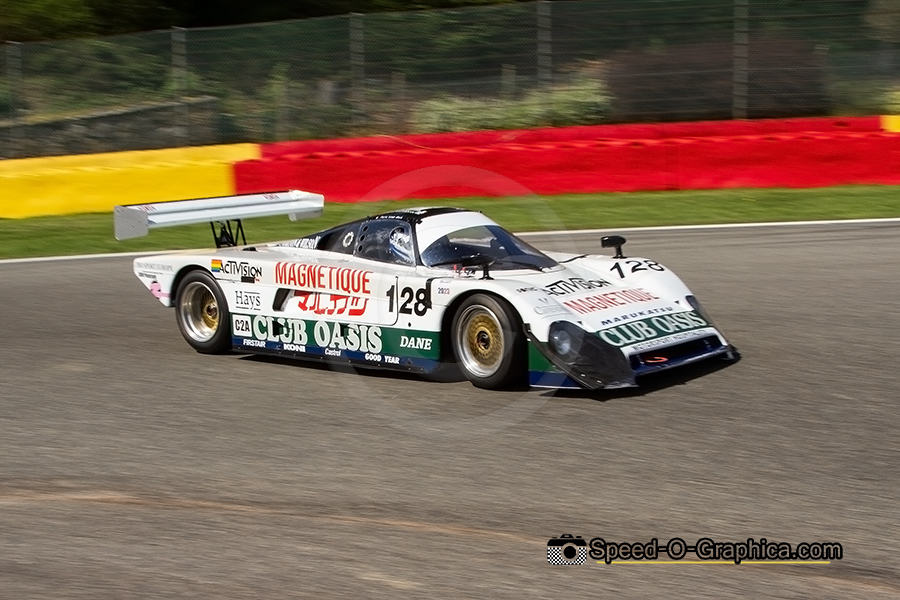
By Marcel Hundscheid / Speed-O-Graphica
We continue our Group C retrospective with a look at Spice Engineering, founded by Gordon Spice and Raymond Bellm in 1986.
Spice and Bellm were racing drivers before they became sports car constructors. They ran Group C2 Tiga sports cars in their early days, but from 1985 began to develop the Tiga GC85 chassis. Besides five class victories during their debut season in 1984, Spice and Bellm scored five further class wins in 1985, including the 24 Hours of Le Mans and the teams championship.
Spice SE86C4
The Spice SE86C was the team’s first car, designed in conjunction with Pontiac and resembling the Pontiac Fiero in silhouette to support Pontiac’s financial backing of the project. Gordon Spice and Ray Bellm drove chassis 001 to victory and a second place in its first two races of 1986. After another victory followed by multiple podium finishes, Spice and Bellm conquered the Group C2 Drivers World Championship. Participating in Le Mans resulted in a 6th place in the C2 class. With Gordon Spice, Fermin Vélez and Philippe de Henning scored an amazing fifth place overall in the 24 Hours of Le Mans in 1987. Gordon Spice triumphed once again by winning the Drivers World Championship in 1987.
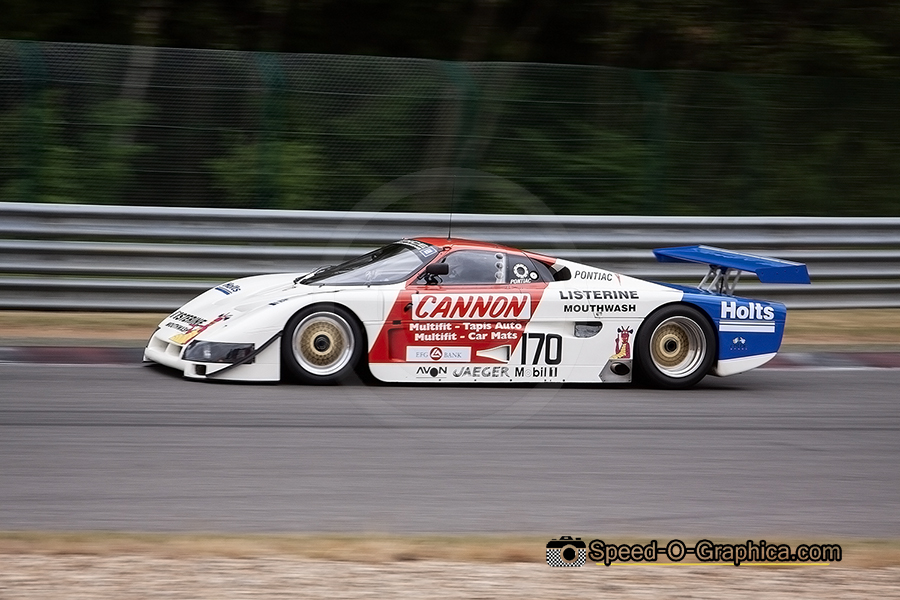
Pictured above is the Le Mans winning works car from 1987 in the C2 division, chassis SE86-001.
Spice SE87C
Spice Engineering designed and developed the Spice SE87C for sports car racing in the Group C2 World Sportscar Championship in 1987 and further. Unlike the very successful SE86, the SE87C suffered from numerous reliability problems, especially in 1987. When the format of the World Sportscar Championship was changed to 480 km races instead of the longer 1000 km races, the SE87C managed to finish several times. Besides participating in the World Sportscar Championship the SE87C was entered in the German Interserie Championship.
Spice SE88C
For the new 1988 racing season, Spice Engineering introduced the SE88C, a second-generation sports prototype. The SE88C could be used by customers in the broadest sense of the word. There was a range of engines to choose from, allowing the car to be used in Group C, Group C2, GTP and GTP Lights.
The Spice SE88C succeeded the earlier SE86C and SE87C in the world sportscar championship. Spice and Bellm dominated the Group C2 class with their factory entries. In addition to the world title, Spice Engineering also won the class in the 24 hours of Le Mans.
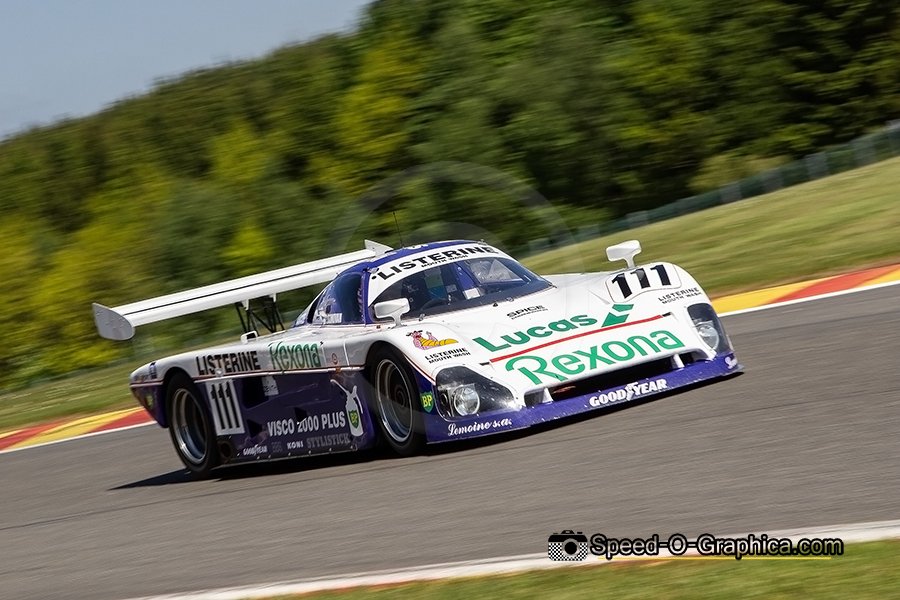
Spice SE88-003 in action at the Spa Classic entered in Group C Racing
Spice SE89C
From 1989 Group C regulations were changed once more. As a result, Spice Engineering entered the C1 class in the World Sportscar Championship. The SE89C failed to deliver in both the C1 and C2 classes. New cars were built for the 1990 racing season which were otherwise identical to the previously built cars. A project to equip the factory team with Lamborghini engines in 1991 was soon shelved.
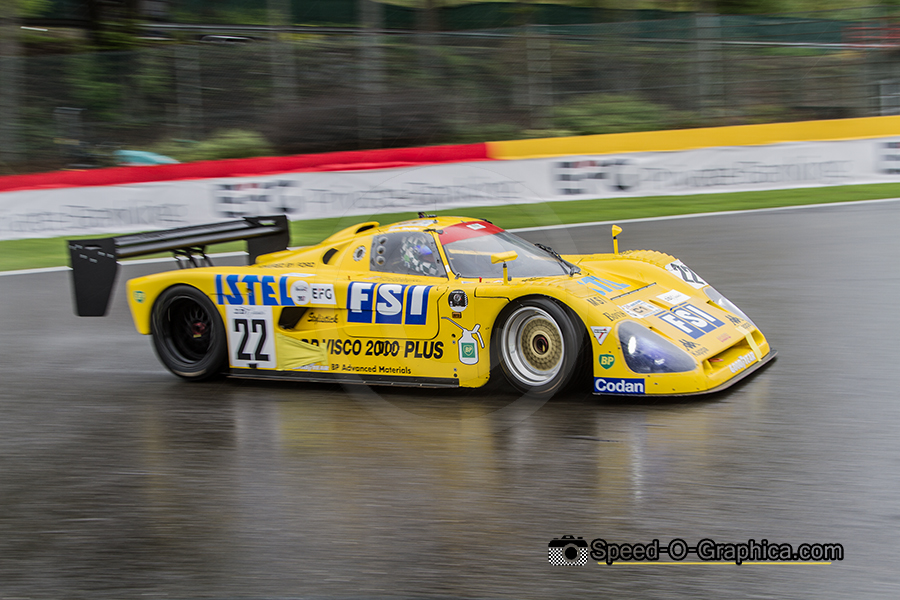
Spice Se89C-003 caught in La Source during a wet qualifying session at the Spa Classic.
Spice SE90C
Designed by Graham Humphrey, the Spice SE90 was intended for the World Sportscar Championship, and more specifically for the 1990 season. Like previous versions, the SE90 was offered to customer teams in two versions. The SE90C to comply with the rules of the C1 class and C2 categories of the World Sportscar Championship, or the SE90P version, designed for the IMSA Championship and the GTP and GTP Light categories. The SE90 is one of the most powerful and outstanding cars of the Spice era, its different versions having won several championships. Spice Engineering built the SE91C and SE92C for racing in 1991 and 1992 although these variants could never match the performance of the early variants of this British manufacturer.
Spice Engineering’s success story came to an end after winning the constructors’ for Oldsmobile title in 1994, despite plans to create their own Formula One team from the company’s new headquarter in Australia.
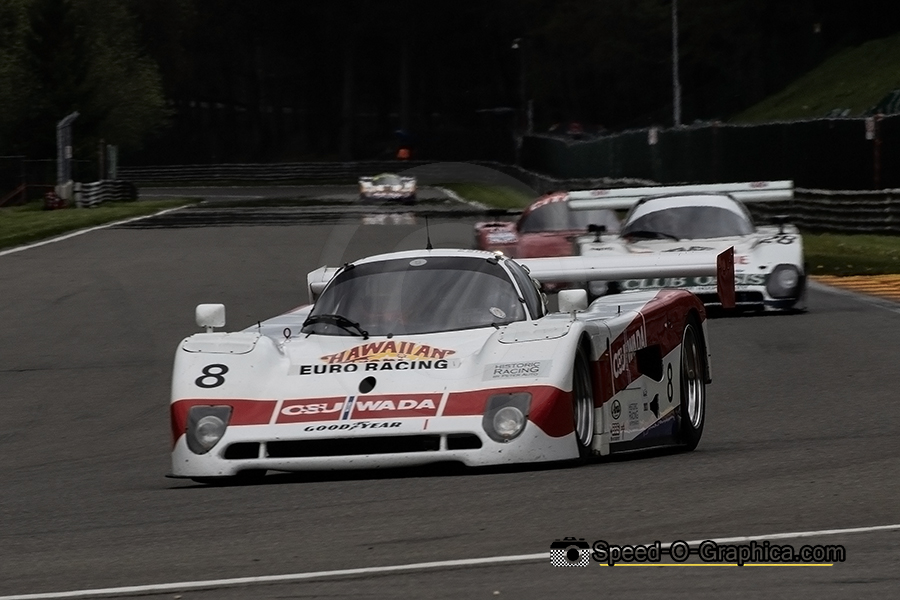
Spice SE90C-022
